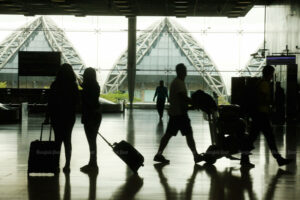 Bangkok’s Suvarnabhumi Airport needs more than just free spaces
Bangkok’s Suvarnabhumi Airport needs more than just free spaces
After almost two decades in operation, Suvarnabhumi airport is finally moving in the right direction.
The airport’s operator has decided to reclaim some space occupied by retail shops and government agencies inside the terminal, which it intends to convert into facilities that would benefit travellers waiting to board their flights.
The total area of the space repossessed in the main concourse and the newly-opened Satellite 1 comes to about 1,900 square metres. Some space at Phuket airport will be reclaimed for the same purpose too. The plan to turn the reclaimed space into facilities for travellers, which would include a playground for children, will cost Airports of Thailand, as the operator of Suvarnabhumi airport, about 90 million baht per year in lost revenue.
The plan is part of a renewed attempt to turn Suvarnabhumi airport into a major aviation hub in the region, a dream which Prime Minister Srettha Thavisin is keen to achieve during his tenure.
However, there’s nothing new about this goal, as various governments have made the same pledge since the airport was designated as the country’s main aviation gateway, replacing the ageing Don Mueang airport, back in 2006. In fact, Suvarnabhumi was built to challenge the dominance of Singapore’s Changi airport at a time when the two countries were closely competing to become Southeast Asia’s aviation hub.
The problem with Suvarnabhumi is the project was based on the wrong assumption. And when one begins with the wrong assumption, the following steps are likely to be just as wrong.
AoT wrongly assumed that most travellers would enjoy a bit of retail therapy before they head to their gates to catch their flights. As a result, every bit of available space beyond the immigration counters was reserved for shops, giving the illusion that travellers are walking through a luxury mall instead of an airport terminal.
The agency takes in a lot of profit from these tenants, but the benefits aren’t felt by travellers. While it takes in millions of baht from high-end shops keen to have a presence at the airport, travellers often still have to queue in a long line to use the restrooms, as the spaces which could be used as restrooms were turned into shops.
The lack of facilities for travellers is just one of among the many problems at Suvarnabhumi, which saw the airport’s ranking plunge from 26th in 2012 on Skytrax’s list of best airports, to 38th in 2017, before dropping to 77th in 2022.
The airport was ranked 68th last year, and 58th this year, but this simply wasn’t enough for the prime minister.
“Our goal is clear. Suvarnabhumi must go up from the 68th [spot] to the top 50 in one year. And we will be in the top 20 in five years,” he wrote on X last year, after the 2023 Skytrax survey came out.
However, in order to be among the top 20 airports of the world, more needs to be done than just simply repurposing retail spaces. And the path towards the goal is pretty clear — Skytrax explained what needs to improve at Suvarnabhumi if it wants to be one of the world’s aviation hubs.
“Bangkok-Suvarnabhumi is spread across a large area which can result in long walking distances for departure, arrival, and transfer,” it said on the website after this year’s survey. “There is a lack of centralised food court provision and overcrowding is a persistent issue. Fast-track channels for security and immigration are often congested which devalues the offering.”
Many Bangkok Post readers have relayed similar concerns. One reader wrote that Suvarnabhumi airport, once promoted as “the airport of smiles”, with friendly service and staff ready to take care of users, should be nicknamed “the airport of miles” instead due to the long distances travellers must cover inside the terminal.
Pushing Suvarnabhumi airport to the top of the world’s best airport list is not impossible, as long the airport’s operator rectifies all of the problems reported by travellers, as well as those identified by Skytrax.
But turning the airport into the region’s aviation hub, as former PM Thaksin Shinawatra and Mr Srettha hope, will require even more pushes.
“My principle is I like to turn things which are near impossible to be possible. If we don’t do that, it would be a waste of time for the country and an opportunity lost for the country,” Thaksin said when he opened the airport. “The fight to be an aviation hub in the region is not that easy.”
Thaksin was right. Eighteen years after he made that statement, Suvarnabhumi has yet to achieve that goal. But adding more space for travellers who are waiting for their flights at Suvarnabhumi airport is a move in the right direction.
Source: https://www.bangkokpost.com/opinion/opinion/2839387/suvarnabhumi-needs-more-than-just-free-spaces

